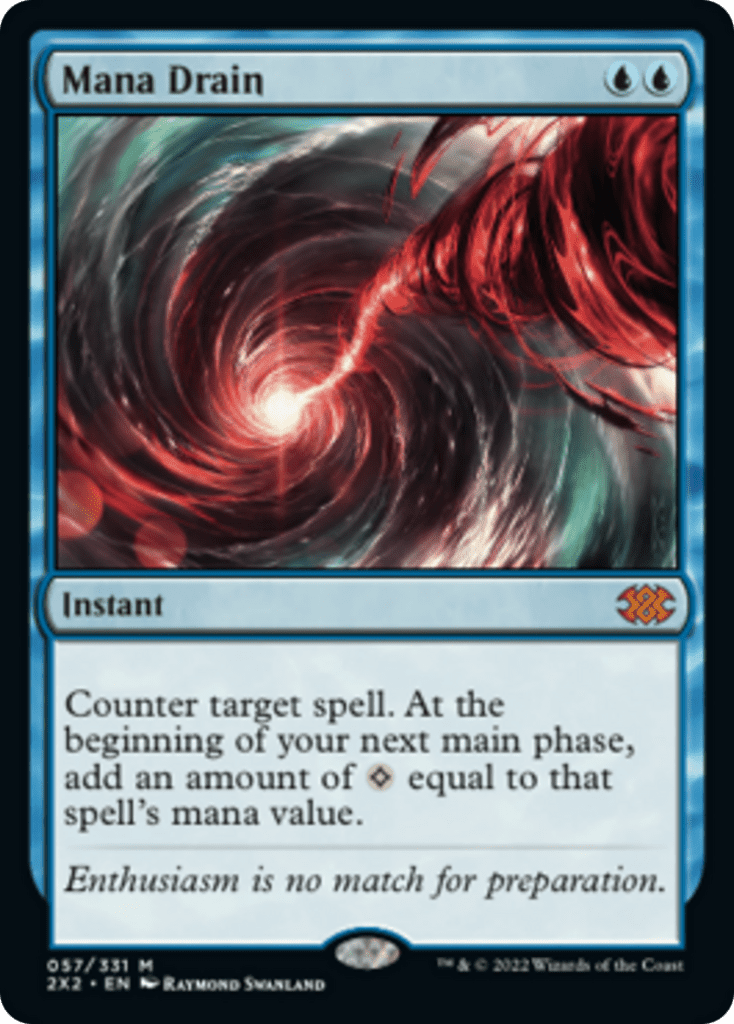
Mana and tempo go hand in hand when playing a game of Magic: the Gathering (MTG). The more mana you have, the more spells you can play during a turn cycle to prevent threats from hitting the table, taking them off the battlefield, or simply stealing them for yourself.
Unfortunately, blue really gets the short end of the stick compared to colors like green, white, or even red when it comes to both permanent mana ramp and temporary mana acceleration.
There just aren’t as many viable ramp options, even with Treasure tokens seeing increased support, which makes it incredibly difficult to access additional mana beyond your land drop each turn without mana rocks. While these artifacts will definitely get the job done, if they’re quickly removed, you’ll definitely feel the loss of tempo more than most others at the table.
These problems are then further complicated by blue’s mostly inconsistent history with mana ramp in the color pie.
How Does Blue Mana Ramp Work in MTG?
Blue’s mana ramp, while limited, tends to favor mana acceleration (a one-time increase in mana) or is earmarked for use with artifacts, or in more recent years, instants and sorceries. Permanent mana ramp is incredibly rare outside of mana rocks or inefficiently costed creatures who tap for mana, as is ramp or acceleration that actually adds blue mana.
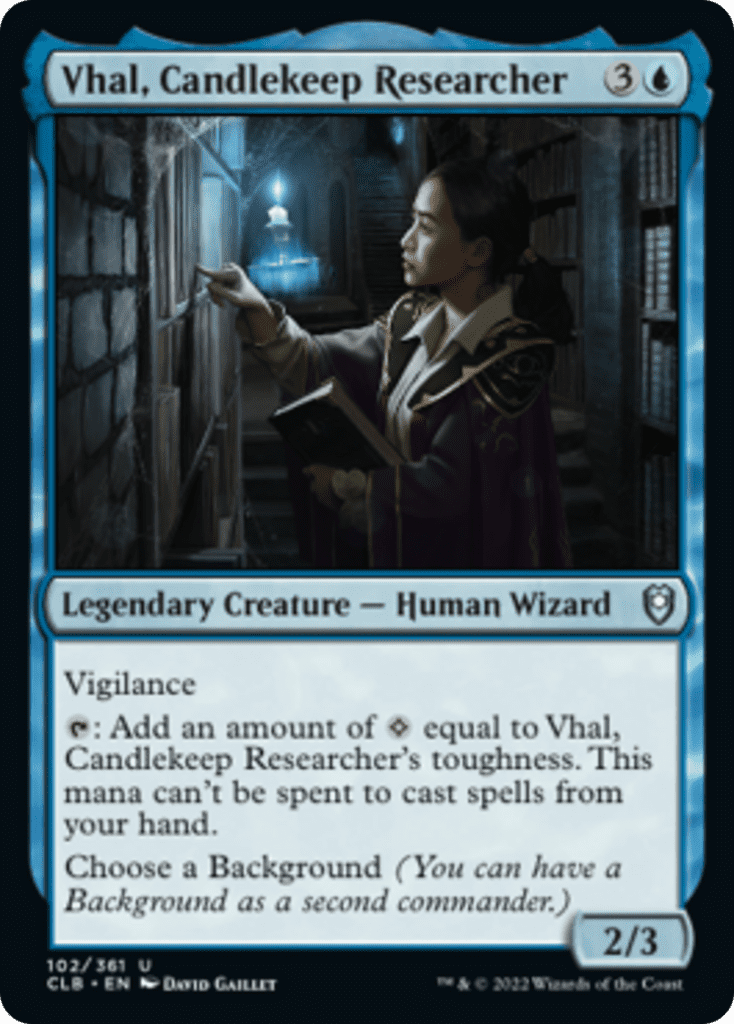
This makes a lot of sense – mana ramp has never been an intended strength within blue’s slice of the color pie, nor is it ever likely to be. Unfortunately, this also means that blue’s methods for mana ramp really aren’t all that well defined, resulting in a very limited pool of cards to choose from without adding other colors, many of which are also mechanically unique.
As a result, you’re going to have to dig really, really deep to find playable generic mana ramp for mono blue Commander decks, and many of your best ramp options will likely have some form of limitation. You’ll also probably find that some of the best mana ramp cards blue can offer simply aren’t going to be good enough for your deck.
We’re still going to cover them here (loosely ranked from worst to best) so you know the best playable options available, but given the opportunity, leaning on another color and/or mana rocks when possible will usually yield better results outside of specific strategies.
Blue Mana Ramp for Instants and Sorceries (Curious Homunculus, Karfell Harbinger, Unblinking Observer, Volshe Tideturner)
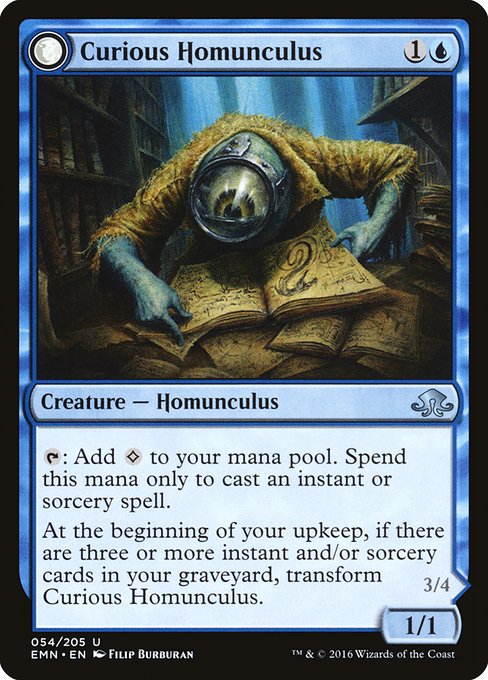
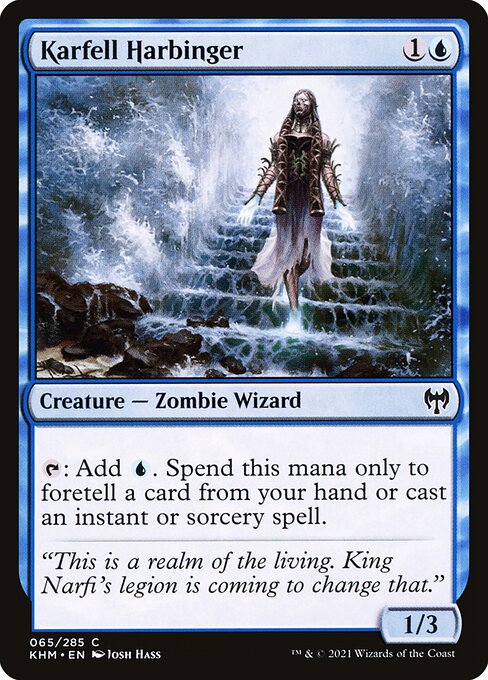

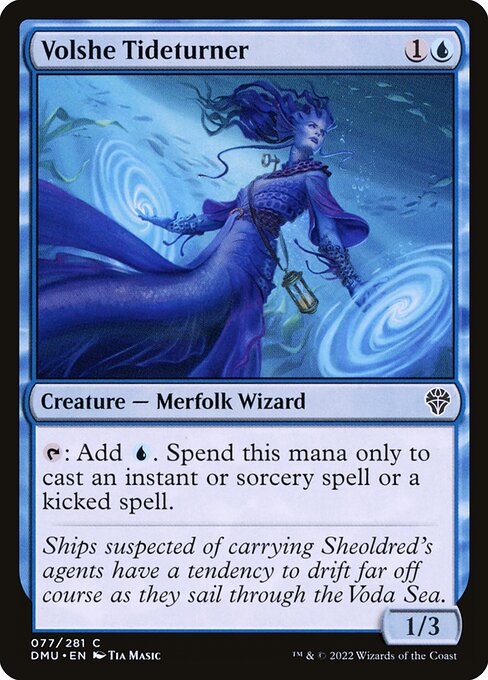
Given how intertwined blue’s color identity is with instants and sorceries, I’m really glad to see Wizards of the Coast dipping their toes into conditional mana dorks that can only use their mana for these types of spells.
Cards like Curious Homunculus, Karfell Harbinger, Unblinking Observer, and Volshe Tideturner are a perfect cross of blue’s perpetual ineptitude at mana ramp while still attempting to provide it in some capacity. Further, these cards also manage to tie in with their original set’s specific mechanical themes, giving them utility in both limited and niche environments.
Of these cards, Curious Homunculus is the clear winner in my book – mana ramp that transforms into cost reduction, a more potent interpretation of mana production, is incredibly strong, even if you have to wait a full turn cycle to start taking advantage of either mode.
The other three creatures aren’t slouches though – they provide blue mana, which is infinitely more useful than colorless mana when trying to set up for card filtering, counterspells, and other instants and sorceries that have multiple blue pips in their mana costs.
Blue Mana Ramp for Artifacts (Grand Architect, Renowned Weaponsmith, Vedalken Engineer)
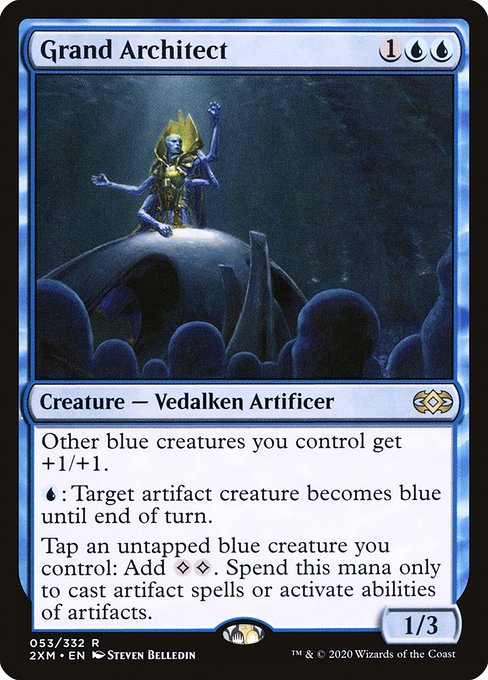
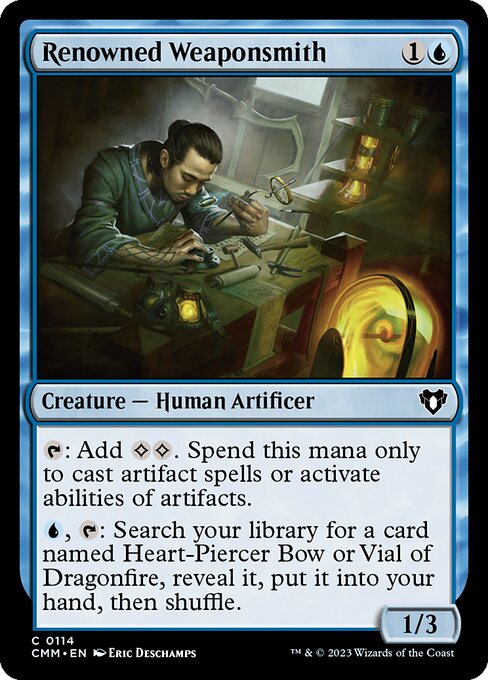
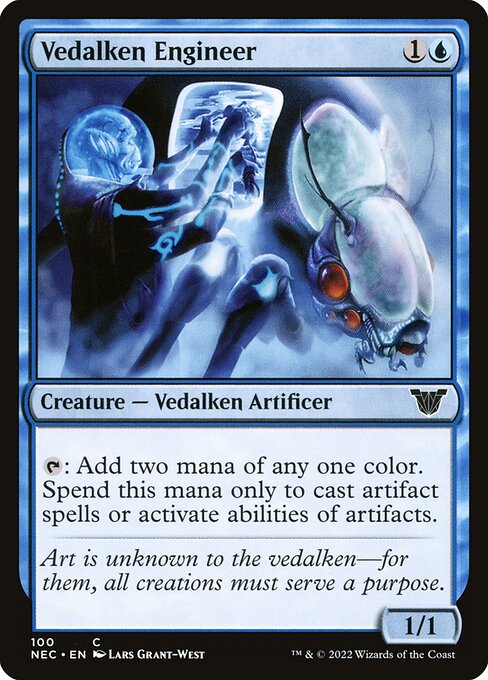
Blue’s incredibly powerful interactions with artifacts date back to the earliest years of MTG, so it’s not a surprise that the mana dorks tailored specifically to them are so much stronger than the more recent mana dorks allocated to instants and sorceries.
Grand Architect is obviously the breakout hit here – it just does so much for 3 mana without even having to wait for summoning sickness to wear off. Don’t let this incredibly powerful creature cause you to shortchange the other two though – 2 mana for a creature that taps for 2 mana is a ridiculously good rate, and Vedalken Engineer even provides colored mana to boot!
Just don’t play Heart-Piercer Bow or Vial of Dragonfire if you run Renowned Weaponsmith in your deck – they’re just not good cards.
Iceberg
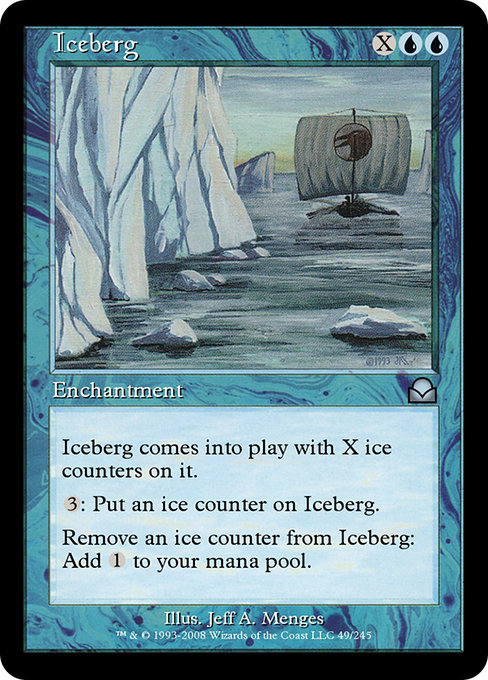
Iceberg is one of the best mana batteries you’ve never heard of. While mediocre in early turns of the game, this card can easily turn 5 mana into 8 or 9 if it survives the turn cycle, and if someone targets it with removal, you can still remove the counters at instant speed to generate colorless mana.
Once your Iceberg is empty, however, there’s really no getting around the fact that this is almost always going to be a one-shot mana boost.
Yes, you can pay 3 mana to stick a counter back onto Iceberg before you untap, and sure, you can do cute things to reduce costs or repopulate your ice counters with Rimefeather Owl, Zirda, the Dawnwaker, and proliferate triggers.
But unless your deck is already geared toward other strategies that also take advantage of these cards, trying to refill a spent Iceberg is gimmicky at best, and an inefficient use of mana at worst.
Energy Tap
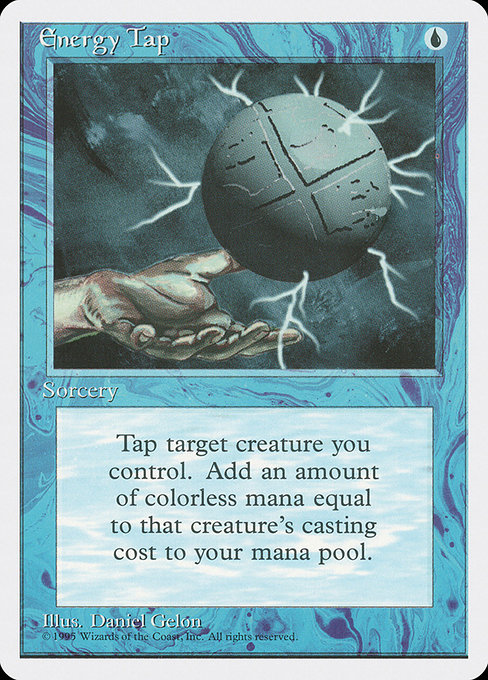
In certain decks, Energy Tap is going to act like one of the best Dark Rituals you’ve ever seen. Tapping an untapped creature (even one that you just played) to gain colorless mana equal to its mana value is an effect that is ripe for abuse.
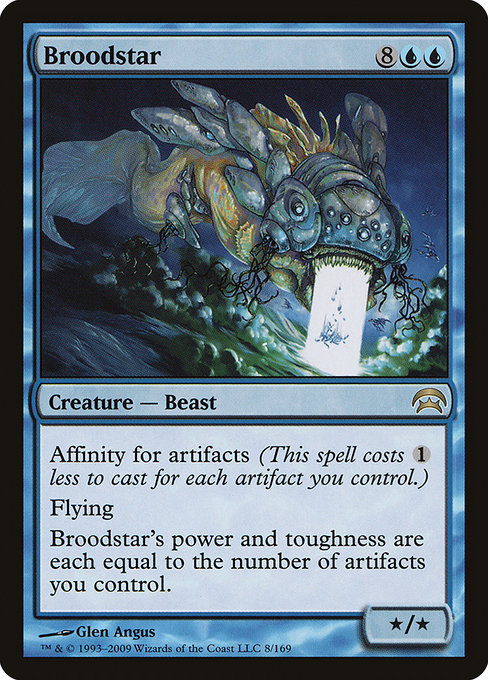
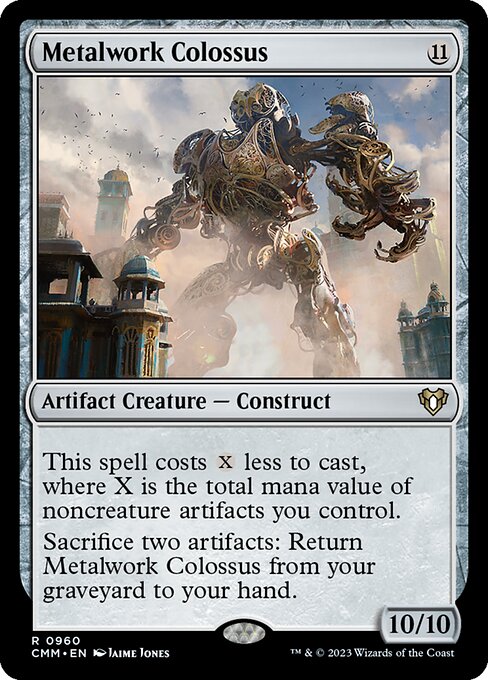
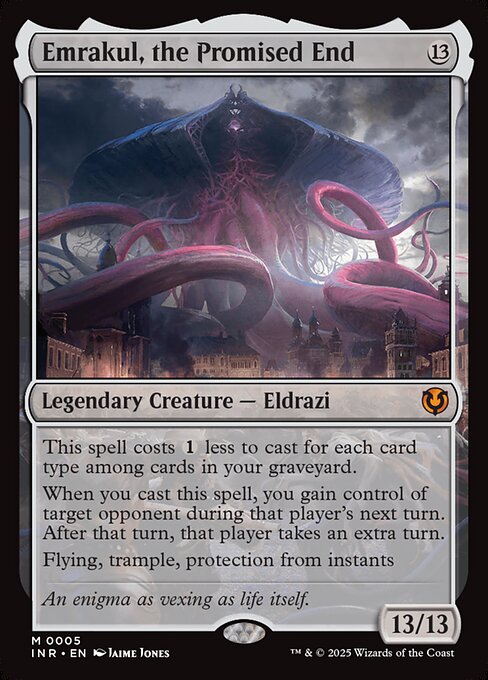
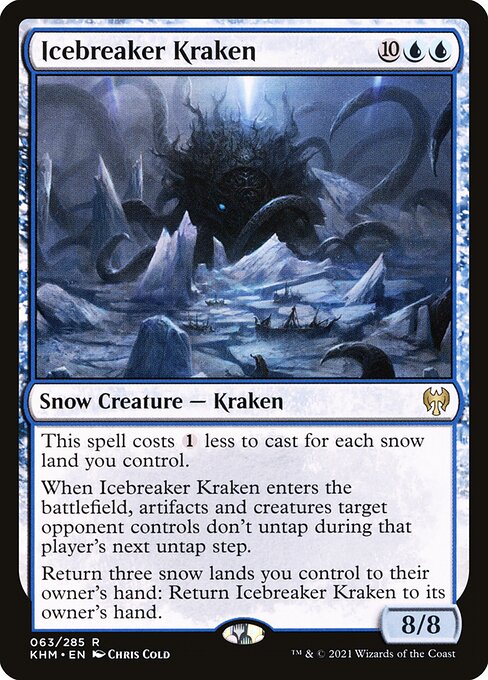
While affinity for artifacts is the mechanic most will instantly think of when plotting how best to maximize the potential of Energy Tap, there are plenty of other creatures in and outside of blue that can easily be played for a steep discount.
Avatar of Fury, Ghalta, Primal Hunger, Bedlam Reveler, and Thought Monitor are just a few of the “expensive at first glance” creatures that I’ve played over the years, and they don’t even begin to scratch the surface of playable cards that offer steep discounts when casting them.
While I don’t necessarily recommend jamming as many creatures with high mana cost and easy cost reduction into your deck as possible to abuse one mana acceleration spell, if you’re already playing a few in your deck, try Energy Tap and let me know how you spent your free 8-15 mana.
Assuming, of course, your opponents didn’t respond to it with a removal spell.
Apprentice Wizard
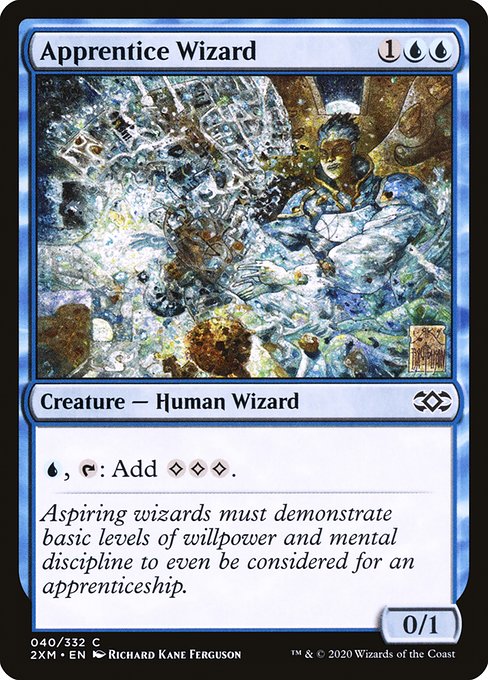
Apprentice Wizard reminds me a lot of Worn Powerstone. Neither is usable the turn it comes down, both net 2 additional colorless mana, but the latter sees infinitely more play than the former.
While part of this is tied to the fact that paying 3 mana for a 0/1 creature isn’t exactly great, the fact that you have to turn a blue mana into 3 colorless mana rather than just getting the extra 2 mana outright is a subtle, yet key difference in how these cards operate.
That extra hoop isn’t a big problem when presented on cards like Azorius Signet, as you can turn colorless mana into colored mana with the added benefit of skipping summoning sickness.
Unfortunately for Apprentice Wizard, colored mana is infinitely more important than colorless mana when ramping, so having to sacrifice it to net less versatile mana isn’t what a lot of decks want to be doing in Commander.
That doesn’t make it a bad card. In fact, having played it a few times with middling success, Apprentice Wizard is pretty handy when it survives long enough to produce mana. But between its slight deficiencies compared to similar cards and the fact that mass creature removal is everywhere, it never does quite as much work as I’d like to see.
Dreamscape Artist
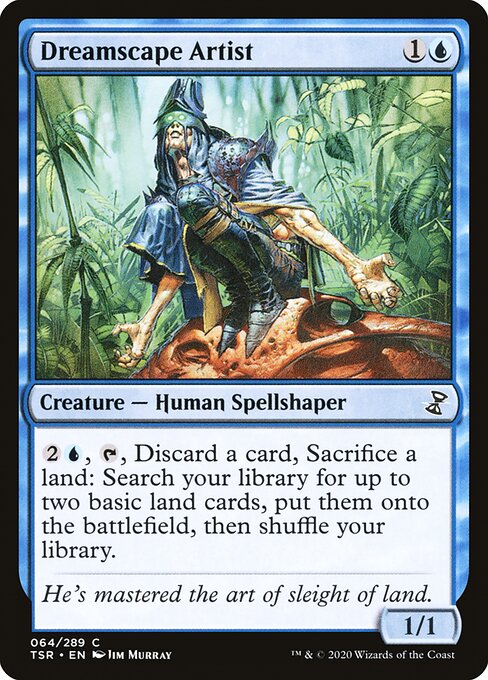
Time Spiral block was a wild, wild time to be playing Magic. I hadn’t even been playing MTG for 2 years when Planar Chaos previews started rolling out, and the color shifted versions of cards we’d come to know so well made Standard exciting in a way I haven’t seen before or since.
While many will remember cards like Damnation, Harmonize, and Akroma, Angel of Fury most vividly, no card was quite as jarring as Dreamscape Artist. Blue was given a creature that could repeatedly emulate Harrow, an actual, factual green mana ramp spell, for as many turns as you wanted.
Despite not being a top-tier ramp spell, Harrow on a stick has proven to be quite good if it survives to see even 1 use. Getting extra lands, thinning your deck, and setting up to fuel reanimation spells or cards like Crucible of Worlds is just so much value for 3 mana.
It even color fixes in multicolor decks, as the basic lands you retrieve don’t have to be the same type!
Regrettably, a number of newer cards have usurped its position over the years (primarily Pilgrim’s Eye and its multiple variants). That said, Dreamscape Artist still periodically finds itself up for consideration in new Commander decks I build to this day, and I’m always delighted to come across one in the wild during a game of Commander.
Lapis Orb of Dragonkind
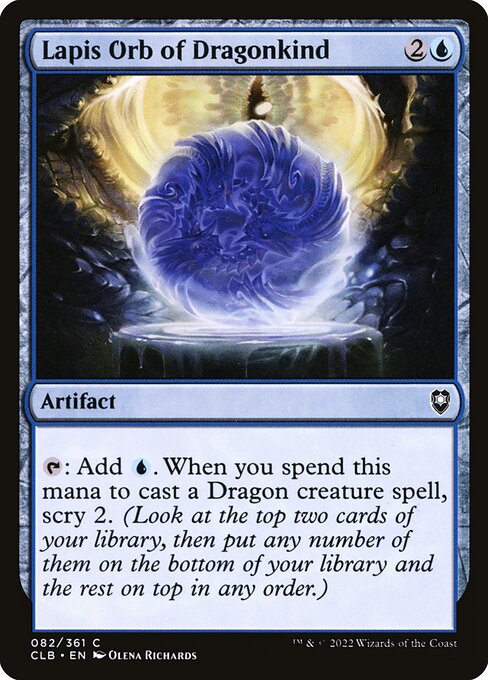
I’m not big on mana rocks that cost 3 or more mana. They’re too slow to move you from the early game to the mid game, cost a burdensome amount in the midgame when you want to play 2 moderately costed spells in a turn, and are just as unwelcome in the late game as their less expensive brethren when looking for a finisher or board wipe.
For decks that simply don’t have access to better ramp options, however, I’m willing to relax my standards a little. Any port in a storm, after all.
Lapis Orb of Dragonkind enters the battlefield untapped, adds colored mana that has no restrictions on its use, and actively rewards you with a solid scry effect for casting Dragons or Changelings with it.
There are definitely worse options out there to choose from if you’re playing a blue or blue/black deck, and the repeatable card filtering this mana rock offers is definitely worth a look for any Dragon decks that can play it and don’t have access to green.
Midnight Clock
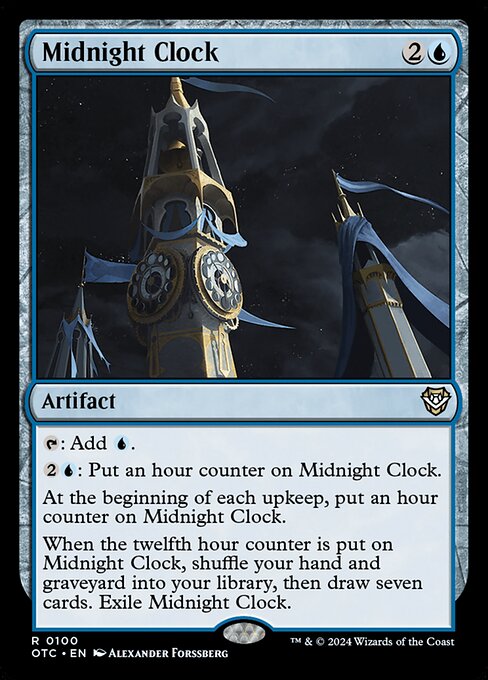
So you know how I said I don’t care for expensive mana rocks? Meet one of my rare exceptions to that rule.
Midnight Clock is a great midgame mana rock that enters the battlefield untapped like the Lapis Orb of Dragonkind, generates blue mana, and refreshes your hand after an average of 3 turn cycles – right around the time your hand is starting to get a little empty.
In a particularly dire situation, you can also dump excess mana into Midnight Clock (including the mana it generates) to speed its hour count along. You probably won’t accelerate your hand refill by more than 2-4 turns over a couple turn cycles, but that can still make a big difference if the game goes long enough and you manage to draw your new hand at the start of your turn.
Deranged Assistant and Sea Scryer
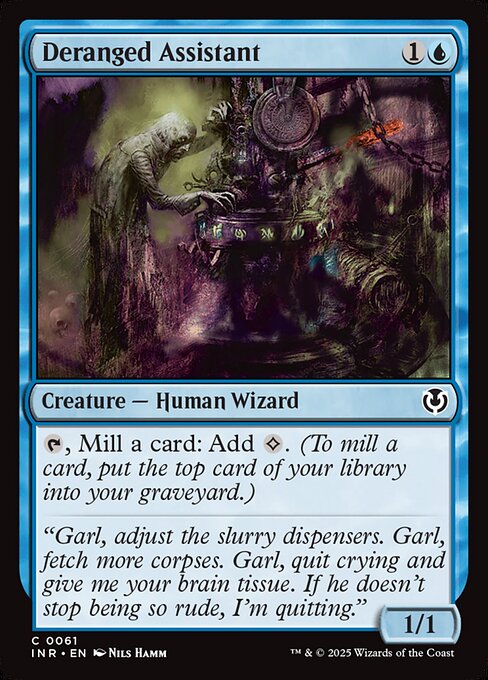
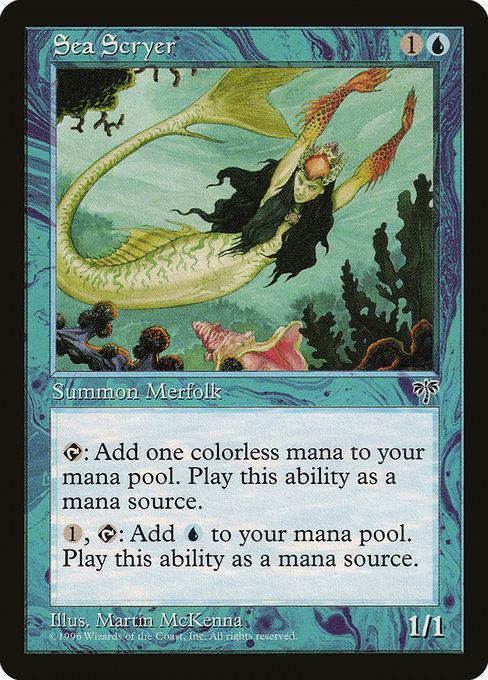
Creatures that are allowed to tap for unconditional mana are a true oddity in blue, and while colorless mana isn’t amazing, I’m happy there are any mana dorks to choose from at all.
Better still, Deranged Assistant and Sea Scryer come down for only 2 mana, so they’re likely to get at least a couple turns of use in the early game when they’re most needed. The other text on their cards isn’t particularly relevant, though Deranged Assistant‘s mill and Sea Scryer‘s color fixing can be helpful on rare occasions, so don’t discount it entirely.
Urza, Lord High Artificer

Urza, Lord High Artificer has been a poster child for combo decks and artifact abuse since the day it was released, and both strategies are more than happy to take advantage of his ability to turn any of your artifacts into a Llanowar Elves that doesn’t have to worry about such petty things as summoning sickness.
Outside of these environments, Urza can still be quite good, as he generates 2 bodies for 4 mana, provides a mana sink with a powerful payoff when needed, and can even turn things like Equipment and Sapphire Medallions into tools to race ahead of your opponents while still employing their inherent value.
Don’t be surprised if he’s killed on sight though – there are many cases that prove even a “fair” Urza can’t really be trusted.
High Tide

High Tide is such a powerful blue mana accelerator, it still sees Legacy play to this day. For 1 mana at instant speed, all your Islands tap for an additional mana. This turns 3 mana into 4, 4 into 6, 5 into 8, and so on, allowing you to play expensive blue and colorless spells with ease.
Despite not being an ideal early mana accelerator, High Tide’s real power comes through once you find ways to untap your Islands and cast it multiple times.
After all, why tap a land for 2 mana when you can play a card like Frantic Search and effectively tap it for 3, or use a Snapcaster Mage to just have your Islands tap for 3 mana outright before using a Time Spiral to refill your hand and untap your lands.
While it is worth noting that Commander’s increased deck size and singleton nature does a considerable amount to rein High Tide in when compared to its potential (and ability to play 4 copies) in Legacy, this is not a card to underestimate, especially as more nonbasic lands with the Island subtype make their way into print.
Also note that it affects all Islands – not just your own. While not an important detail in all games, giving another blue player extra mana can open up the opportunity to derail your plans if you’re caught by surprise.
Mana Drain

Imagine a world where noncreature spells are king, creatures cost more mana and have fewer abilities than they do today, and deciding “You know what? I don’t think Counterspell is a good enough Magic card.”
And then you decide to print Mana Drain.
Even in a world with mana burn (where you lost life if you didn’t spend all the mana in your mana pool between phases), I still cannot understand why this card saw print, let alone why the prospect of losing a few points of life was considered sufficient downside for generating 2-7 mana in a color not known for mana ramp.
Countering a spell for 2 mana has always been a good rate, and then giving you the ability to stop a power play while effectively stealing the benefits of an opposing Dark Ritual, Black Lotus, and/or Moxen on your next turn was powerful Magic then, and it is certainly not worse now.
TL;DR: If you’re playing blue in Commander and own a copy, you should almost always be playing Mana Drain. While it’s better known as an interaction spell, stapling any amount of mana acceleration to a 2 mana counter is ridiculously efficient, and there are only a handful of counterspells in the game that would be considered better even after 30 years.
Is Blue’s Mana Acceleration Worth It?
Blue’s mana ramp options usually top out at “situationally powerful”, requiring you to either commit to a single color, an artifact-focused deck, or a dedicated combo as your win condition.
In these cases, you should absolutely play as many of the situationally powerful blue ramp and acceleration cards that make sense for your deck. In a scenario tailored to them, these spells are capable of doing an absurd amount of work.
For those pursuing Commander decks outside these strategies, very few of blue’s limited mana ramp and acceleration options are going to consistently make the cut. In my experience, the only ones I even consistently look at are Mana Drain and Midnight Clock due to their added utility and universal applications in gameplay.
This is especially true once you branch out to mana rocks and multicolor decks – the best of two colors, especially if one of those colors is green, white, or red, is going to present ramp and acceleration options that will easily outshine most of blue’s incredibly shallow pool of generic playables.
That’s not a bad thing though – if all colors were good at all things, Magic wouldn’t have lasted the test of time. Finding ways to work around a color’s weakness in the color pie is a large part of the fun for many, myself included, and I wouldn’t have it any other way.
Other MTG Articles You Might Enjoy
- Best Green Ramp Spells in EDH
- Best White Ramp Spells in EDH
- Best Red Ramp Spells in EDH
- Good Mono Blue Tutor Cards for Commander
- MTG Best Equipment for Commander
- MTG Blink EDH Commanders
- MTG Best Mana Rocks for EDH
Braden is a founder of Assorted Meeples and has been a gamer & writer with a vivid imagination all his life. Don’t believe us? Check out his excitement when meeting Goosebumps author R.L. Stine as a kid! An avid Magic: The Gathering spellslinger for over 15 years, you can always convince him to shuffle up for a game (or three!) of Commander.
